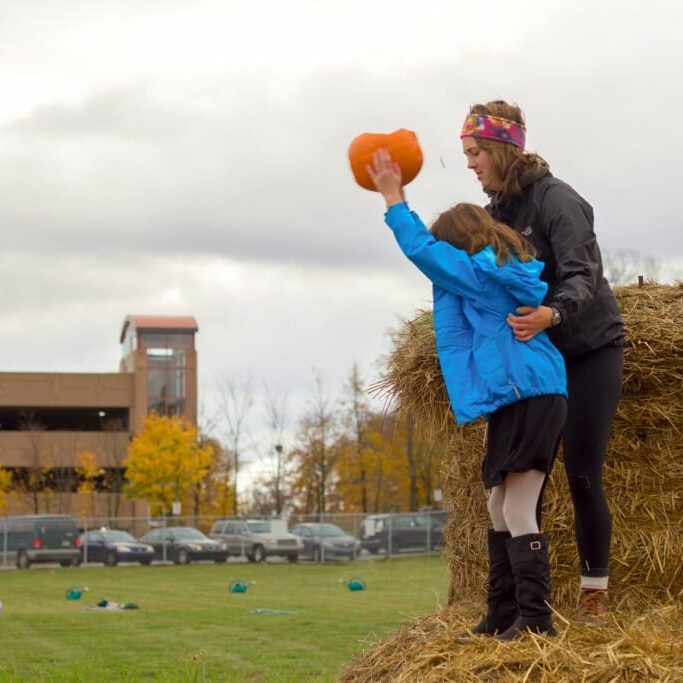
Something there is that doesn’t love a fence
Smashing pumpkins isn't just a nineties thing.
Smashing pumpkins isn’t just a nineties thing. Children on hay bales raise orange globes overhead, throwing them to the ground with Dionysian abandon. This is the corner of Robie Street and Bell Street on Sunday, Nov. 4. There’s no grunge to be heard, but violin and acoustic guitar ring over the emptied garden plots at the community garden hootenanny. Pumpkin remnants are promptly shoved into a wood chipper to be purreed into compost. That’s the modus operandi of the Common Roots Urban Farm: nothing wasted.
Spirits are high, riding steam from hot apple cider and coffee on tap; there are crowds of families, street-folk and the heavily-sweatered gathered against November’s chill and torrential leaves.
Jayme Melrose, project coordinator for the event, is ecstatic about the turnout. “There were so many people I’ve never met!” she says.
A revolving group of vegetable peelers sit on a row of hay bales, pressed side by side with cold fingers plucking peas. While separating garlic, a new friend wagers me some carrots if I’ll dance through the pumpkin chunks spouting from the wood chipper. While I hesitate someone starts singing “Don’t Stop Believing” and we all marvel at the extra hour of surprise sleep from daylight savings time. Is all this cheerfulness a defense against the unsettling approach of winter? The seeds we’re parsing will be planted in the Annapolis Valley on Tuesday-to spread the abundance.
“I’d say pea shoots are a hit,” says Melrose. “We’re still just learning the soil, the site, watering and fertility.”
There’s a curious gate being painted off Robie Street; it’s a futuristic zylophone, or a curving silver stairway, depending on whom you ask. The installation, assembled with the help of a dozen classes of HRM students and welded on site, is the symbolic centerpiece of the whole project. It’s made of the fence that once circled the now-demolished Queen Elizabeth II High School.
“Originally we had understood we we’re going to need to keep the fence up, all around the site, so we wanted to try to find some way of making the fence, rather than it be a point of exclusion,” says Melrose.
“We wanted to see how we could make it an access point—particularly for the groups that would have the hardest time accessing a community project. How can we use collaborative art to help people gain access to the site?”
The solution: weld the fallen fence posts together into an eloquent spiral gate.
As darkness sets in an hour early, all that’s left of bean mash, apple pie and vegetables are empty bowls. I sense the changing of seasons is not only natural but deeply satisfying to celebrate.
Melrose looks forward to the future of the garden. “I could see more people involved, to keep extending the diversity of people involved—more seniors!”







